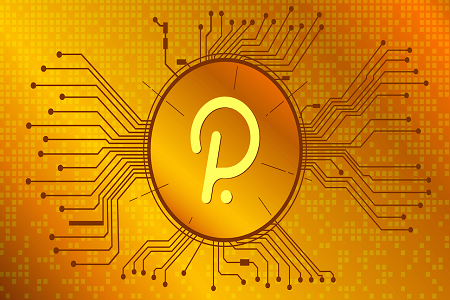Last updated on July 10th, 2023 at 06:44 pm
Polkadot was created by a co-founder of Ethereum, Dr. Gavin Wood, and it is designed to permit blockchains to easily transfer value in a trustless manner while sharing their peculiar functionalities with one another. A key aspect of Polkadot is its top-notch security. According to the founders of Polkadot, this network can act as the solution for the ETH2.0 upgrading process.
Polkadot’s underlying technology is focused on achieving a highly heterogeneous and scalable network that promises to change the way blockchain technology functions.
Polkadot Origin
The story of Polkadot started with Wood releasing a whitepaper detailing what he intended to achieve with the network. Wood was once a CTO of Ethereum, and it is believed that he wrote the Solidity language that supports the Ethereum blockchain.
While he worked with Vitalik Buterin, a co-founder of Ethereum, Wood allegedly got tired of waiting for the development of ETH2.0 to begin. Since it was getting delayed, he decided to leave the Ethereum Foundation in 2016, to create a sharded version of Ethereum. Once he left, he created the Web3 Foundation, which has the underlying purpose of researching and developing decentralized networks like Polkadot.
Wood has also co-founded another innovative platform called Parity Technologies. He co-founded it with Jutta Steiner, the former head of security at Ethereum. Parity Technologies is focused on ensuring that Polkadot continues to develop and churn out innovations.
Polkadot Consensus Mechanism
Polkadot’s team noticed the issues in Ethereum, and decided to create innovations to solve them. Scalability and high gas fees are crucial issues that Polkadot is solving.
When it was initially created, it was designed to act as a Proof of Authority (PoA) protocol. The governance system was maintained by a super-user account, but that changed once validators began to join the network.
At a point in time, the network saw that it would fare better with another consensus algorithm and decided to abandon the PoA consensus mechanism. In June 2020, it opted for the Proof of Stake (PoS) protocol which was a great decision on its part.
When it noticed that the network had validators to secure the community and its functionalities, the network abandoned the super-user account. Now, the governance is currently being handled by token holders. With this alteration, Polkadot has achieved its philosophy of being a highly decentralized protocol.
Polkadot’s native token (DOT)
At the moment, DOT has climbed the ladder to become one of the most revered cryptos in existence. DOT is the utility token of the Polkadot sphere, and it is used in staking, bonding, and carrying out governance activities. With the DOT token, holders can easily decide on what happens within the network through submitting proposals and voting. They are allowed to determine what the operating fees are when new parachains should be added, the duration of an upgrade, and much more.
The second functionality of the token is its helping to secure the network. Since the consensus mechanism is PoS, the holders can easily validate transactions occurring in the parachains. Before this can happen, DOT has to be staked.
DOT plays a third role that allows it to incorporate new parachains when it is held, and it is called bonding. While the DOT tokens are being bonded, they can’t be accessed for use. This changes when the bonding period ends and the parachain is removed.
Polkadot’s Architecture
Polkadot wanted to stand out from Ethereum to become a heterogeneous blockchain platform. To achieve its objective, it utilizes “parathreads” and “parachains”, which are connected to the Polkadot Relay Chain. Every chain in the ecosystem has been linked to external networks via bridges. There are three kinds of chains within the Polkadot ecosystem.
- Relay chain
This is the powerhouse of the protocol, responsible for handling the consensus, shared security and cross-chain interoperability of the network. Relay chain is the main blockchain, where the transaction blocks and value transmission are done.
- Parachains
They fall under the second category of chains and act as independent, standalone blockchains. As custom chains, they are meant to attain some purposes. Using the computing resources, they are actively involved in validating the transactions and ensuring that they are accurate.
These chains can develop a peculiar governance mechanism, while they benefit from the shared security feature in Polkadot. Before a project can run a parachain, it has to rent a spot on the Relay Chain via an auction process.
- Parathreads
Parathreads are the last chains in Polkadot, and they are similar to the Parachains, though they have several differences. Instead of renting a slot, this chain works with the pay-as-you-go model. This option is meant for those projects that do not need to continuously use the features in the protocol.
Polkadot also has other functionalities like:
- Bridges
With the bridges, Polkadot will attain interoperability, meaning that it will interact with external chains like Ethereum. As time goes on, the bridges will be connected to every blockchain.
- Nominated proof of stake (NPoS)
This consensus algorithm maximizes the shared security capability of the network, ensuring that none of the parachains is compromised. With the NPoS, stakers can nominate the validators they think will work effectively in the protocol. NPoS is different from the typical PoS consensus mechanism because nominators can lose their stake if they are involved in the nomination of a bad actor.
Conclusion
To conclude, Polkadot aims to deploy a multi-chain application environment that brings together a network of heterogeneous blockchains. It also intends to provide a solution that enables interoperability not just between public permissionless blockchains but also between these and their private permissioned counterparts.
Polkadot is certainly one of the major blockchain projects out there seeking to address the scalability problems faced by earlier smart contract projects such as Ethereum.
For more articles like this, follow DeFi Planet on Twitter and LinkedIn.





















